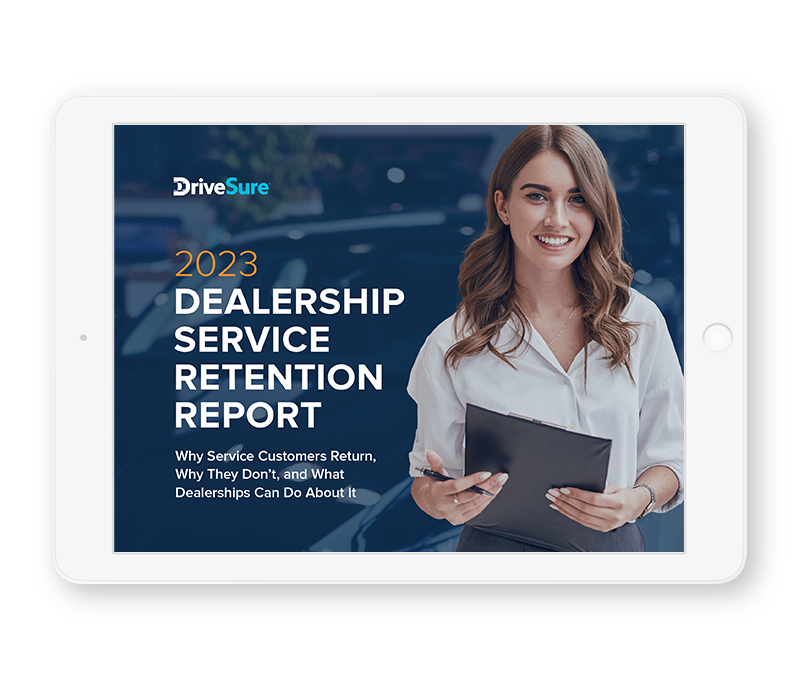Using the power of “free” is a classic approach to customer acquisition. Free trials for feature-based subscriptions have long been an effective way for companies to attract new customers in the automotive industry. Even something as simple as a test drive is an example of the proven “try it free before you buy” strategy. So how can this powerful acquisition tool also be adapted to become an effective service customer retention strategy for dealerships?
Let’s first take a look at why these approaches work so well.
What low-risk, feature-based subscriptions show us about customer acquisition
The automotive industry has been exploring ways to keep customers engaged long after the initial purchase. One such approach is through flexible, feature-based subscriptions. These subscriptions can include services like telematics, which can be turned on and off or transferred to another vehicle like a rental car.
With these subscriptions, a customer could activate a feature (like a navigation package or an in-vehicle WiFi hotspot) for a road trip and deactivate it afterward, only paying for the time they actually used the service. This flexibility not only makes the service more attractive but also increases the likelihood of customers trying it out in the first place.
On top of this flexibility, the industry has had a great deal of luck when offering free trials for these subscription services. In fact, a survey of 8,000 consumers found 82% of those who had gotten a free trial would “definitely” or “probably” consider buying a subscription-based service the next time they buy a new vehicle.
There’s a common theme on both sides of this: reducing a customer’s perceived sense of risk.
What keeps customers coming back to your dealership?
Insights from Nearly 1,500 Dealership Customers
The power of free trials for dealership customer acquisition
Free trials work as a sales tool because they lower the barrier to entry and reduce risk: when you can try something without commitment, you feel safer trying it out.
This applies in the service lane too: a complimentary first oil change or a no-cost vehicle inspection are common promotions to boost customer acquisition. Once customers have had a taste of the service through these “free trials,” the chances of them converting to become a regular customer increase significantly.
The trial period serves as a confidence-building phase, where customers can decide how useful and reliable the service is for them. If the feature meets or exceeds their expectations, the transition from a free trial to a paid subscription becomes almost seamless.
This idea isn’t new or groundbreaking. So how would this same concept apply to retention?
Free value as a service retention strategy
If the power of “free” in acquisition involves lowering the barrier to entry, its power in retention is about increasing the costs of exit. In other words, if you’re the only dealership offering customers a great service at no cost, simply for being your recurring customer, they would sacrifice this benefit if they switched to a competitor.
This works for at least a couple major reasons:
- Exclusivity: If your dealership is the only place where customers can access a particular set of free benefits, the perceived cost of switching to a competitor
- Loss aversion: People generally dislike losing something they already have, a phenomenon known in psychology behavioral economics as “loss aversion.”
Consider the approach of offering value-added services during routine maintenance visits. For instance, when customers come in for an oil change, they could be introduced to a range of benefits that expire at the end of their recommended service interval. These could include services like simplified roadside assistance and road hazard tire protection. Benefits like these are designed to resolve unexpected issues that might arise, making it easier and less costly for the customer.
Of course, it wouldn’t make sense to offer this deal indefinitely, which is why the expiration period is so important.
Why a benefit’s expiration date boosts retention and satisfaction
The time-sensitive nature of these benefits adds another layer to the retention strategy. Because these perks expire, customers have a built-in reason to return to the dealership for their next scheduled maintenance, renewing their benefits in the process. This creates a cycle of engagement that not only keeps the customer coming back but also provides multiple touchpoints for the dealership to reinforce its value proposition.
More importantly, you create an incentive to come in more often. That’s especially important since people become less likely to bring their cars in for service as the vehicle gets older. More frequent visits give your technicians more opportunities to identify issues, and then fix them before they become bigger problems.
While this translates to more revenue in the short term, it also results in more satisfied customers who can trust you to keep their vehicle running smoothly.
Keep your service customers coming back
Recognizing the power of using value-added benefits like this, we designed a Renewable Benefits suite, allowing dealerships to offer a suite of perks that expire at the end of each recommended service interval, creating a natural incentive for customers to return.
To get a deeper understanding of what keeps service customers coming back and what makes them leave, we polled dealership customers to create the 2023 Dealership Service Retention Report. Download it today and get the latest insights and advice to boost retention at your dealership.
What keeps customers coming back to your dealership?
Download the 2023 Dealership Service Retention Report to see what dealership service customers have to say.


